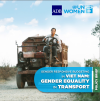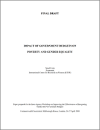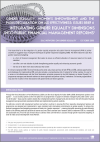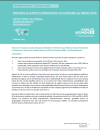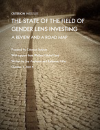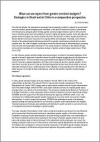Since the start of the COVID-19 pandemic, almost USD 16 trillion has been pumped into the global economy, and governments are now rolling out second and third ph
FOUND 10
Transport is one of the most important aspects of national infrastructure and a key to gender equality. Women’s opportunities to access paid work are reduced when there is poor investment in gender
In this paper, Simel Esim (2000) focuses on expenditure and revenue instruments of fiscal policy as strategic entry points for engendering macroeconomics. The paper also includes a discussion of the potential implications of monetary policy and overall fiscal stance on poverty and gender equality.
This Issues Brief published by the DAC NETWORK on Gender Equality in October 2010 is on the integration of a gender equality perspective into public financial management (PFM) in partner countries. It suggests ways of using the techniques of gender-responsive budgeting (GRB).
This brief paper has been prepared in accordance with the guidance note from UN Women in consultation with the Equal Opportunities Commission (EOC), Civil Society Budget Advocacy Group (CSBAG) and the
UN Women Policy Brief: Reforma Impostu Rendimentu no Konsumu ba Timor-Leste
Well-being gender budgeting (WBGB) experiences use a multidimensional approach for planning and budgeting combining the Capability Approach along with gender responsive budgeting.
This report (2015) tells the history of the field of gender lens investing over the last five years and outlines a roadmap to the future, defining the critical areas of focus for resources and attention.
What if budgets could help us revisit the shortcomings of mainstreaming by providing more concrete and measurable instruments? This article intends to contribute to this debate through some practical examples and a comparative analysis of gender sensitive budget experiences in Brazil and in Chile.

